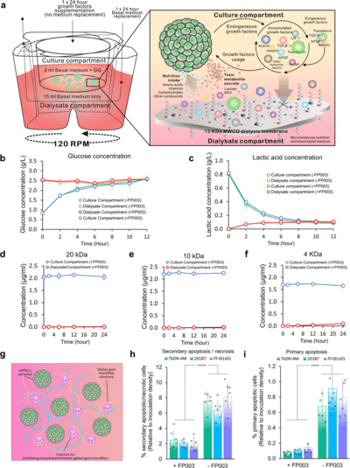PRESS RELEASE
- Research
- 2021
A miniature dialysis-culture device allows high-density human-induced pluripotent stem cells expansion from growth factor accumulation
Authors
Fuad Gandhi Torizal, Qiao You Lau, Masato Ibuki, Yoshikazu Kawai, Masato Horikawa, Masataka Minami, Tatsuo Michiue, Ikki Horiguchi, Masaki Nishikawa & Yasuyuki Sakai
Abstract
Three-dimensional aggregate-suspension culture is a potential biomanufacturing method to produce a large number of human induced pluripotent stem cells (hiPSCs); however, the use of expensive growth factors and method-induced mechanical stress potentially result in inefficient production costs and difficulties in preserving pluripotency, respectively. Here, we developed a simple, miniaturized, dual-compartment dialysis-culture device based on a conventional membrane-culture insert with deep well plates. The device improved cell expansion up to approximately ~3.2 to 4×107 cells/mL. The high-density expansion was supported by reduction of excessive shear stress and agglomeration mediated by the addition of the functional polymer FP003. The results revealed accumulation of several growth factors, including fibroblast growth factor 2 and insulin, along with endogenous Nodal, which acts as a substitute for depleted transforming growth factor-β1 in maintaining pluripotency. Because we used the same growth-factor formulation per volume in the upper culture compartment, the cost reduced in inverse proportional manner with the cell density. We showed that growth-factor-accumulation dynamics in a low-shear-stress environment successfully improved hiPSC proliferation, pluripotency, and differentiation potential. This miniaturised dialysis-culture system demonstrated the feasibility of cost-effective mass production of hiPSCs in high-density culture.
Communication Biology : https://www.nature.com/articles/s42003-021-02848-x

